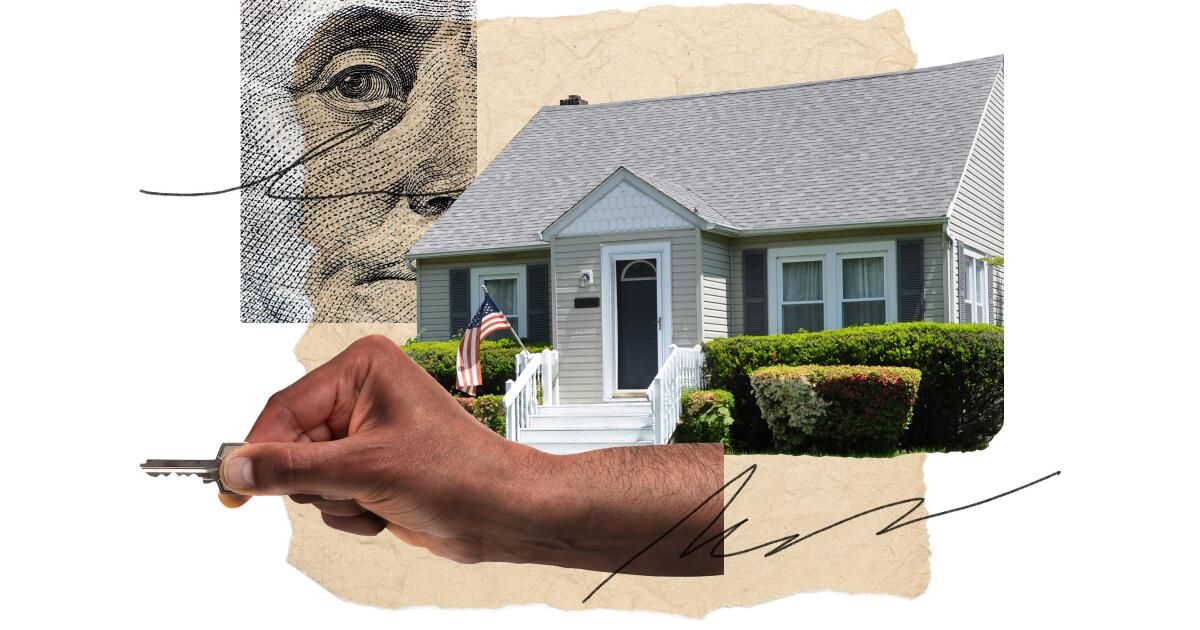At a time when it was extremely difficult for black families to buy homes and use government benefits, my grandfather accomplished a nearly impossible feat: he used the GI Bill after World War II and bought a home.
For three years, I have researched the wealth gap between blacks and whites. In interviews with black families, I learned that discrimination prevented their family members from using the GI Bill.
My family's rare history of homeownership when most black families couldn't afford homes shows us that, without discrimination, more black families could have become homeowners and leveraged that wealth to fund education, businesses and other bottom-up economic initiatives. However, even for those like my family who had access to some government programs, economic options were limited due to discriminatory laws and racism, forcing people like my grandparents to live in neighborhoods restricted or built for black residents.
The GI Bill could have helped black Americans gain wealth, as the legislation did for white Americans. Instead, black Americans were largely excluded, and the GI Bill widened the wealth gap between blacks and whites. Now that the debate is over compensation and another initiatives To address past inequities grows, this story of missed opportunities underscores why all African American families should be eligible for any socioeconomic programs, beyond the GI Bill, at the state and federal levels.
The federal government created the GI Bill program in the summer of 1944 to help veterans, regardless of race, with loans for education, job training, homeownership and business. The loans were administered at the state and municipal level. Those with local power decided who got the loans or not. Prejudices and discrimination appeared.
More than a million African Americans served in World War II. There is no definitive data on how many black Americans were prohibited from using the GI Bill. Academics studying That period they say that very few were able to take advantage of it.
In one of my interviews, a woman said her father tried to use the GI Bill in New York after serving in the Navy from 1955 to 1959. A banker told her he couldn't use the bill because many houses had title deeds. ownership or restrictions. covenants that would not allow black families to purchase them, she said. In another example, the family of William Alexander Scott III, who had been a sergeant during World War II, said Scott hoped to use the GI Bill to attend Georgia Tech. But the school rejected him because he was black, according to his writings in a old notebook
Louis Lee Woods II, a history professor at Middle Tennessee State University, researched the GI Bill and estimated that it could have created 400,000 black homeowners in our economy.
Of the estimated 1,154,486 African American World War II veterans, fewer than 30,000, or 2.6%, “ever benefited from the homeownership provisions of the GI Bill.” Woods wrote in an article..
Today the The homeownership rate for blacks is about 45% and for white Americans it is 75%.. In Los Angeles, white homeownership rate is double the rate for black families.
My family's experience reflects what could have been. My grandfather was drafted around age 18, his military service card shows. Neither he nor my grandmother finished university and he was disabled in the war. The GI Bill allowed him to buy a house in 1954.
My family isn't sure how he was able to access the GI Bill or how he overcame the obstacles other black families faced. What we do know is that there were few safe places that welcomed black homeowners. But my grandparents, Robert and Bessie, discovered a shelter in the suburbs of Newburg, Kentucky, that had been founded by Eliza Tevis, a former slave. So Robert used the GI Bill and bought his house for $9,000. It was a new house with a light-colored stone exterior, 1,000 square feet, three bedrooms, one bathroom and a basement.
My grandparents had six children there. Bessie stayed most of the time at home, honing her excellent domestic skills (sewing, cooking, babysitting), but she occasionally took on odd small jobs. She obtained her training in cosmetology at one of Mrs. C.J. WalkerBeauty schools and later her GED. Robert worked at Celanese Corp.
The equity in Robert and Bessie's house helped pay for my aunt's first year of college. After my grandfather died in 1984, Bessie continued to live in the house, which by then was paid for, until she sold it for about $80,000 in 2009. She used the money from that sale to buy a condo closer to her family .
Despite the advantages the house provided us, it would be difficult to find many other families like mine. The GI Bill also did not protect us from the pervasiveness of discrimination. The United States has already limited the economic prosperity of black Americans. It's time to reverse that.
GI Bill Reparations have been proposed in Washington in several congressional cycles. Whatever your position on the issue of reparations, when you meet people like me (a successful professional whose grandfather used the GI Bill), keep in mind that I am the exception. In reality, 97% of African-American World War II veterans were unable to use the GI Bill.
Both Robert's and Bessie's parents also owned homes (although my family isn't sure how my great-grandparents allowed them). That makes me a fourth generation black homeowner in the United States. I have learned that that simple statement is not simple or easy at all. It's almost a miracle.
Ebony Reed, journalist and media executive, is co-author with Louise Story of the new book, “Fifteen Cents on the Dollar: How Americans Created the Black-White Wealth Gap.” She is the chief strategy officer of the Marshall Project and teaches an MBA class on racial wealth gaps at the Yale School of Management.












